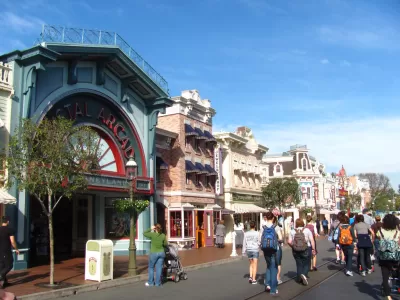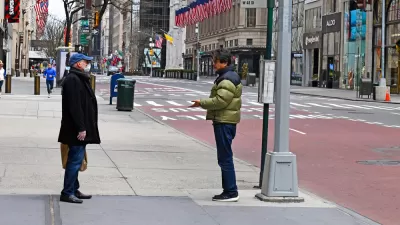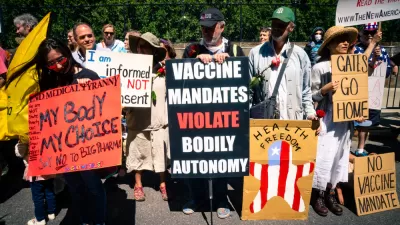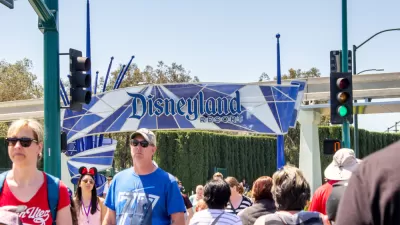According to a study, Disneyland could comfortably accommodate 50% of the 110-acre theme park’s pre-COVID-19 attendance capacity.

When is Disneyland going to re-open? Many want to know, but we still do not have the answer to this question. In the meantime, we can get an idea of the number of folks that the highly popular theme park can accommodate while complying with COVID-19 protocols and requirements, a all thanks to an article by reporter Brady MacDonald that discusses the findings of a study by Brad Kissling, a landscape architect and theme park planner with Thinkwell Group.
Findings of the study reveal:
- Disneyland could theoretically let in 25,000 to 30,000 visitors per day and still allow for six feet of physical distancing per person when the theme park reopens with new COVID-19 health and safety protocols in place.
- In pre-COVID-19 times, theme park density tended to range between 500 and 650 people per acre. During the COVID-19 era, those numbers will need to be cut in half—to 250 to 325 people per acre—to accommodate appropriate physical distancing.
- Disneyland accommodated approximately 545 people per acre in the pre-COVID-19 era and would need to reduce those numbers by 50% to allow for appropriate physical distancing in the “new normal.” On the low end that would be about 25,000 visitors per day and on the high end approximately 30,000.
Disneyland rarely discusses attendance or capacity figures for the park so Thinkwell had to make some assumptions to come up with its estimates. Nevertheless, this is interesting information, especially for those eager to return to Disneyland. The Thinkwell white paper referenced in this article is fascinating and contains graphics that help readers understand density-related issues at theme parks.
FULL STORY: Disneyland could allow for social distancing at 50% capacity, data shows

Planetizen Federal Action Tracker
A weekly monitor of how Trump’s orders and actions are impacting planners and planning in America.

Congressman Proposes Bill to Rename DC Metro “Trump Train”
The Make Autorail Great Again Act would withhold federal funding to the system until the Washington Metropolitan Area Transit Authority (WMATA), rebrands as the Washington Metropolitan Authority for Greater Access (WMAGA).

DARTSpace Platform Streamlines Dallas TOD Application Process
The Dallas transit agency hopes a shorter permitting timeline will boost transit-oriented development around rail stations.

Renters Now Outnumber Homeowners in Over 200 US Suburbs
High housing costs in city centers and the new-found flexibility offered by remote work are pushing more renters to suburban areas.

The Tiny, Adorable $7,000 Car Turning Japan Onto EVs
The single seat Mibot charges from a regular plug as quickly as an iPad, and is about half the price of an average EV.

Supreme Court Ruling in Pipeline Case Guts Federal Environmental Law
The decision limits the scope of a federal law that mandates extensive environmental impact reviews of energy, infrastructure, and transportation projects.
Urban Design for Planners 1: Software Tools
This six-course series explores essential urban design concepts using open source software and equips planners with the tools they need to participate fully in the urban design process.
Planning for Universal Design
Learn the tools for implementing Universal Design in planning regulations.
Municipality of Princeton
Roanoke Valley-Alleghany Regional Commission
City of Mt Shasta
City of Camden Redevelopment Agency
City of Astoria
Transportation Research & Education Center (TREC) at Portland State University
US High Speed Rail Association
City of Camden Redevelopment Agency
Municipality of Princeton (NJ)





























